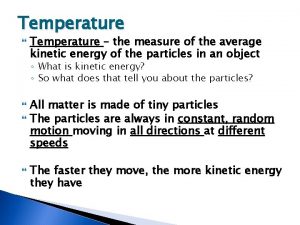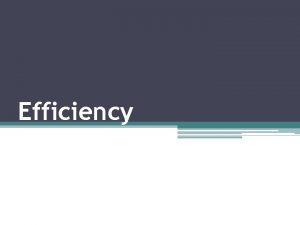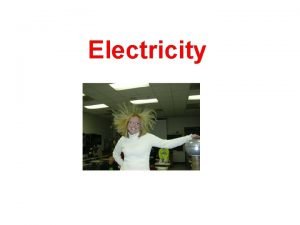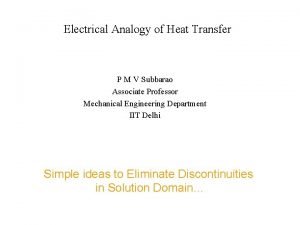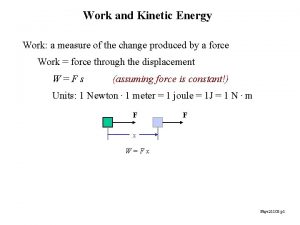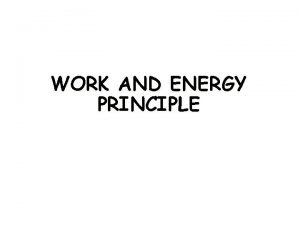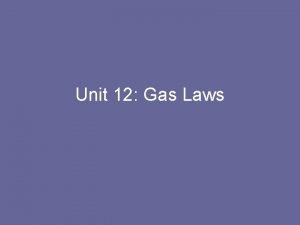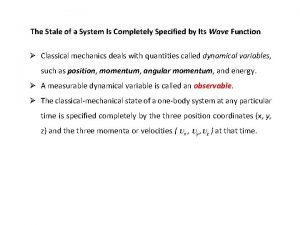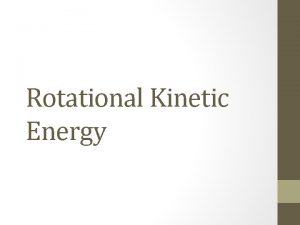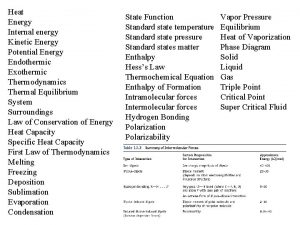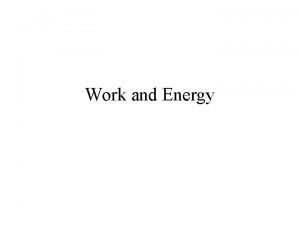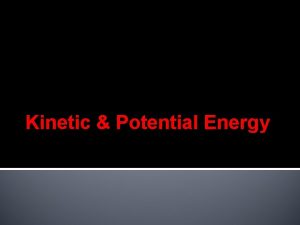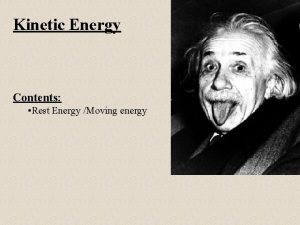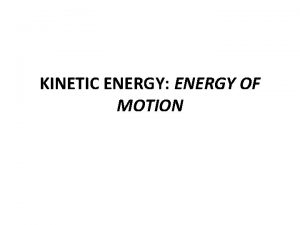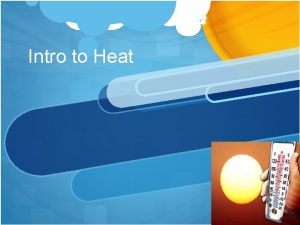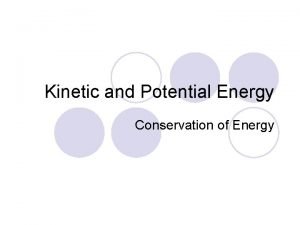Useful kinetic energy Useful heat energy Electrical Energy























- Slides: 23

Useful kinetic energy Useful heat energy Electrical Energy Wasted light energy Electrical Energy Wasted heat energy Useful sound energy Electrical Energy Wasted heat energy

Lesson Title Efficiency

Success criteria Ø Compare devices in terms of their efficiency Ø Draw a sankey diagram of an immersion heater Ø Calculate the efficiency of an immersion heater Ø Suggest explanations for different efficiencies of heater

Recap from last lesson Efficiency = useful energy (or power) out total energy (or power) in Sometimes this is expressed as a % Efficiency = useful energy (or power) out x 100 total energy (or power) in

Mini Review

Applying our knowledge We can calculate the efficiency of any system as long as we can measure the energy inputs and outputs. What will happen if we set up this circuit?

Useful formulae: V = IR Electrical power = VI = I 2 R = V 2/R Electrical energy = Power x Time = VIt = I 2 Rt = (V 2/R)t Heat energy = mass x specific heat capacity x temperature rise Total energy in = V x I x t Useful energy out = m x C x θ Efficiency = m x C x θ Vx. Ixt

Variables Ø Independent Ø Dependent Ø Control

What do you think will make the most efficient heater?

Draw your results table Ø Change in temperature over ~5 minutes Ø You will need to also record: l l l Time Voltage (average) Current (average) Mass of water used Length and thickness of wire

Our experiment 1. 2. 3. 4. 5. Collect your equipment Do pre-measurements (things that wont change throughout the experiment) Set up the circuit Get it checked Start the experiment!

Group results Group 1 2 3 4 5 6 7 8 9 10 11 12 Length of wire Thickness of wire Average temp rise (°C) Efficiency of the heater

Conclusions What was the efficiency of your heater How did this compare to other heaters? Can you explain what made the difference?

Evaluating results In order to assess the quality of your evidence, you need to consider the following things: Ø Reliability Ø Validity Ø Accuracy







Evaluating an experiment Ø Were your results reliable? How could you improve them? Ø Were your results valid? Ø Were your results accurate? What kinds of errors were there (systematic or random) and how could you reduce them?

Apply to Demonstrate Ø Now you have calculated the efficiency of the heater, describe what you have found out in the form of a Sankey Diagram. Ø Then Kerboodle exam questions – finish for homework (they will help you to revise for the mock!)

Plenary Ø What did you learn today? Ø What did you find difficult? Ø What do you feel most confident in? Ø How do you feel now?
 What is mechanical energy
What is mechanical energy Site:slidetodoc.com
Site:slidetodoc.com Total energy formula
Total energy formula Gravitational potential energy vs kinetic energy
Gravitational potential energy vs kinetic energy Kinetic energy to thermal energy
Kinetic energy to thermal energy Potential energy vs kinetic energy
Potential energy vs kinetic energy Definition of kinetic energy
Definition of kinetic energy Spring potential and kinetic energy
Spring potential and kinetic energy Formula of potential energy
Formula of potential energy Conservation of mechanical energy
Conservation of mechanical energy Predict whether plastic foam which contains
Predict whether plastic foam which contains Useful output power
Useful output power Electric potential energy formula
Electric potential energy formula How to convert mechanical energy to electrical energy
How to convert mechanical energy to electrical energy How do motors work
How do motors work Heat transfer electrical analogy
Heat transfer electrical analogy How are thermal energy and temperature different
How are thermal energy and temperature different Specific heat capacity graph
Specific heat capacity graph Latent heat dimension
Latent heat dimension Example of dry heat
Example of dry heat Kinetic energy to acceleration
Kinetic energy to acceleration Principle of work and kinetic energy
Principle of work and kinetic energy Relation between pressure and kinetic energy of gas
Relation between pressure and kinetic energy of gas Kinetic energy operator
Kinetic energy operator
